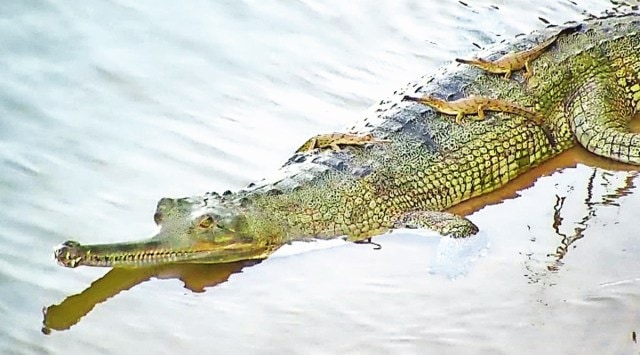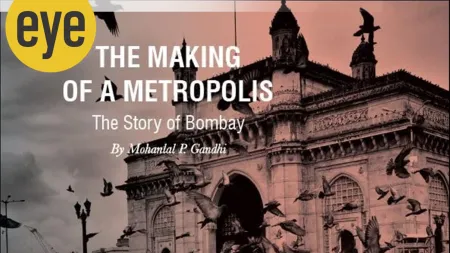- India
- International
It’s a gharial! After 45 yrs of wait, Odisha welcomes first hatchlings
As many as 28 hatchlings were spotted towards the end of May in the Mahanadi, in the Baladamara area near Satkosia range, and officials have been monitoring them closely since, with round-the-clock vigil including drones.
 28 gharial hatchlings were spotted in end May. (Courtesy Divisional Forest Office, Satkosia)
28 gharial hatchlings were spotted in end May. (Courtesy Divisional Forest Office, Satkosia)For the first time since they were introduced in its rivers back in 1975, Odisha has seen natural nesting of gharials, a critically endangered species. As many as 28 hatchlings were spotted towards the end of May in the Mahanadi, in the Baladamara area near Satkosia range, and officials have been monitoring them closely since, with round-the-clock vigil including drones.
All the original gharials introduced over the years in Odisha are dead now. Having waited more than 40 years for their numbers to grow naturally and for them to lay eggs, Odisha introduced 13 more gharials over the past three years in the Mahanadi. Only eight survived. While the Forest Department is still tracking two of them via their radio collars, the other six have moved out of its radar.
With the introduction of gharials in 1975, Odisha had become the only state to have all the three species of the reptile —freshwater gharials, muggers and saltwater crocodiles.
Nearly 50 foresters from six forest divisions are monitoring the hatchlings, camping close to their habitat, patrolling the water bodies and spreading awareness across 300-odd villages located close to the river to help preserve the gharials.
Six officials are stationed closest to where the hatchlings and the mother gharial are. “We also have solar-powered CCTV cameras to keep a watch, and manually update on the movement of the reptiles,” said Divisional Forest Officer, Satkosia Range, Ravi Meena.

Gharial eggs need incubation for 70 days, and the hatchlings stay with their mothers for several weeks or even months.
A team of four persons patrols the main river area in two country boats. With the onset of monsoon, this is crucial since hatchlings can stray into breakaway nullahs or be swept away from their mother in rising waters. “We have roped in local fishermen, who are aware of the geography. We avoid mechanised boats as their noise may scare or disturb the hatchlings,” Meena added.
Satkosia Field Director, Pradeep Rajkarat said their main concern was flooding due to the rains. “Announcements are being made in villages and posters being put up.”
Rajkarat added that gharials, being different from muggers, do not harm humans. “But many people mistake them for crocodiles and consider them harmful. We are trying to ensure the hatchlings are not harmed.”
Earlier this month, the Forest Department announced Rs 1,000 for anyone rescuing a gharial, and compensation for those whose fishing nets are destroyed by the reptiles. “Cash rewards will encourage villagers to protect the hatchlings,” said Harsha Bardhan Udgata, Divisional Forest Officer, Mahanadi wildlife division.
The Field Director added that they would be watching the gharials till they are in their natural habitat, which is deeper waters. Gharials come to the shallow areas to lay eggs. Most of the gharials introduced in Odisha earlier were first kept in the Nandankanan zoo before being released into the river.
Lately, the habitats of gharials are under threat due to encroachment and fishing. Those caught in fishing nets are either killed or have their snouts cut off. Gharials are also weaker than crocodiles and muggers, and don’t survive a fight between them.
Gharials were granted full protection in the 1970s and later listed in Schedule 1 of the Wildlife (Protection) Act, 1972.
Apr 28: Latest News
- 01
- 02
- 03
- 04
- 05







































